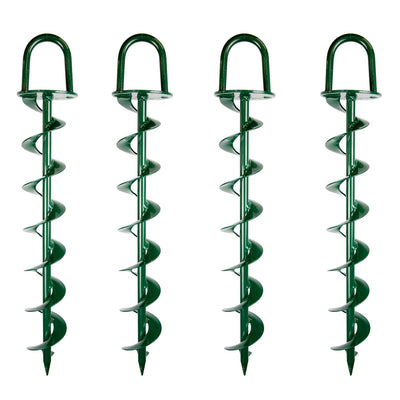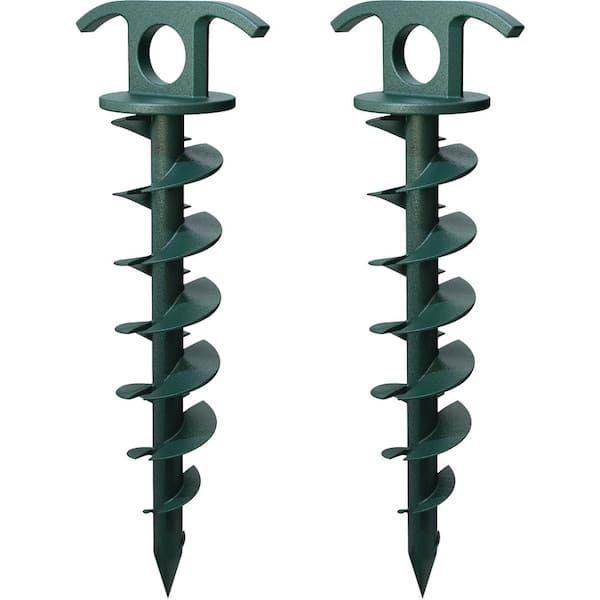The Best Ways to Install a Ground Anchor for Optimal Performance
Explore the Different Types of Ground Anchor for Your Following Project
When embarking on a building and construction or landscaping project, recognizing the various sorts of ground anchors offered is vital to making sure both security and longevity (Ground Anchor). From auger supports, which master varied soil problems, to risk anchors developed for short-lived installments, the alternatives are various. Furthermore, concrete and screw anchors present unique benefits in particular scenarios, while deadman supports are tailored for applications calling for resistance to side forces. The selection of an ideal anchor type can dramatically influence the overall success of your job, prompting more exploration into their corresponding benefits and applications.

Auger Anchors
Auger anchors are a preferred choice in different construction and landscaping projects due to their one-of-a-kind style and efficient securing capacities. These anchors include a helical screw-like shaft that is driven right into the ground, permitting a secure and stable hold. The spiral style facilitates easy installment and makes best use of resistance against side forces, making auger anchors specifically efficient in applications such as secure fencing, short-lived frameworks, and disintegration control.
The installation procedure of auger anchors is fairly straightforward. Auger anchors can be easily eliminated and reused, which includes to their cost-effectiveness and sustainability.
Among the considerable advantages of auger anchors is their ability to distribute lots uniformly across the surrounding dirt, lowering the danger of dirt disturbance and minimizing environmental impact. In addition, they are much less at risk to loosening or heaving gradually compared to conventional anchoring techniques. Consequently, auger supports are an outstanding choice for tasks calling for durable and trusted anchoring options.

Stake Anchors
When it concerns protecting structures in a selection of exterior applications, risk supports provide a reputable and uncomplicated solution. These supports are usually created from resilient materials such as steel or light weight aluminum, created to stand up to ecological stresses while giving optimal stability. Their straightforward style enables quick installment, making them an excellent option for momentary or permanent anchoring needs.
Stake anchors are particularly useful in protecting camping tents, covers, and various other light-weight structures against wind and climate. They function by being driven into the ground at an angle, creating a solid hold that withstands pull-out pressures - Ground Anchor. The efficiency of stake anchors relies on a number of elements, including dirt type, moisture web content, and the angle of installment
For included protection, several stake supports feature attachment factors for ropes or bands, permitting stress modifications as required. In applications such as landscape design or building, they can effectively maintain equipment or frameworks on uneven surface. Overall, risk anchors offer a affordable and functional remedy for safeguarding various outside setups, making them a favored selection for professionals and do it yourself lovers alike.
Concrete Anchors
Concrete anchors offer a durable remedy for safeguarding frameworks to concrete surfaces, making sure security and security in various applications. These supports are essential for tasks varying from household buildings to massive industrial installments. They are available in different types, including expansion supports, you could try here glue supports, and undercut anchors, each developed for particular load needs and ecological problems.
Sticky anchors use high-strength epoxy or resin to bond the anchor to the concrete, offering superior load-bearing capacities, especially in fractured concrete circumstances. Undercut supports create an unique form within the concrete, offering remarkable holding power, specifically in applications where tensile tons are widespread.
Choosing the appropriate concrete support involves considering elements such as the weight of the tons, the condition of the concrete, and ecological conditions. Correct installment techniques are vital to make certain optimum performance and dependability. When implemented properly, concrete supports significantly improve the structural integrity of various jobs, making them crucial in modern-day building and construction methods. Comprehending the particular requirements of your project will aid in choosing the ideal type of concrete support for the job.
Screw Anchors

Screw anchors are a flexible securing solution that can be successfully used in a range of applications where standard concrete supports may not be enough. These supports are composed of a helical design that enables them to be quickly driven into the ground, making them suitable for usage in dirt and various other substratums. Their distinct structure offers exceptional holding power and resistance to pull-out pressures, making them ideal for countless tasks, from landscape design to architectural assistance.
Among the main advantages of screw anchors is their convenience of installment. They require very little equipment and can frequently be mounted without the requirement for excavation, which conserves both time and labor costs. Additionally, screw supports can be removed and reused, offering a lasting option for momentary applications.
Screw anchors are especially useful in areas where soil conditions are challenging, such as sandy or loosened dirts. Their capacity to be mounted at varying midsts enables personalization based on particular task requirements. On the whole, screw anchors give a effective and dependable securing approach, making them an outstanding option for service providers and designers seeking effective remedies for their jobs.
Deadman Anchors
Deadman anchors serve as a durable option for maintaining structures investigate this site in difficult problems, especially where typical anchoring approaches might fall brief. These anchors are composed of large, hefty objects buried underground, which create resistance versus lateral forces. The style usually entails a straight component, such as a block of concrete or a metal plate, hidden in the dirt, to which bands or wires are attached.
The performance of deadman anchors exists in their ability to distribute lots over a larger location, decreasing the read here risk of failing in unpredictable dirt conditions. They are especially beneficial in applications such as keeping wall surfaces, short-term frameworks, and slope stabilization, where soil activity can jeopardize the stability of the structure.
Setup of deadman anchors calls for careful planning to guarantee they are put at the proper depth and orientation, optimizing their load-bearing ability. While they may call for even more labor and product than lightweight anchors, their reliability in adverse conditions makes them vital for long-lasting tasks. Deadman supports are functional and can be adapted to different applications, making them a best option for designers dealing with one-of-a-kind challenges in their tasks.
Verdict
In recap, picking the suitable type of ground anchor is crucial for guaranteeing stability and protection in different projects. Auger supports succeed in varied soil conditions, while risk anchors fit momentary applications. For concrete surface areas, expansion and sticky anchors provide reputable options, and screw anchors supply convenience in tough surfaces. Deadman supports are especially effective in standing up to side forces for maintaining wall surfaces. Mindful consideration of these options will certainly improve project outcomes and structural honesty.
Additionally, concrete and screw anchors existing special advantages in particular situations, while deadman anchors are customized for applications requiring resistance to lateral pressures - Ground Anchor.Auger supports are a preferred option in numerous construction and landscaping jobs due to their one-of-a-kind style and reliable anchoring capacities. They come in various types, consisting of expansion anchors, glue supports, and undercut supports, each designed for certain lots needs and ecological problems
Sticky anchors utilize high-strength epoxy or material to bond the support to the concrete, providing exceptional load-bearing abilities, especially in cracked concrete situations. In general, screw supports provide a trustworthy and effective securing approach, making them an excellent selection for designers and professionals looking for reliable remedies for their jobs.